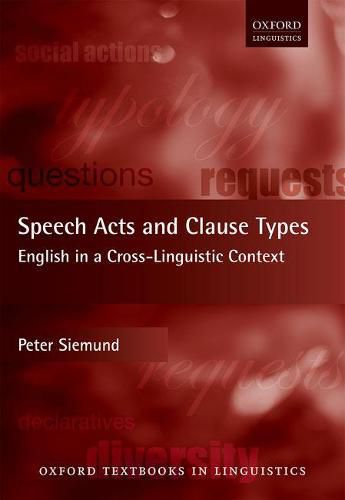Readings Newsletter
Become a Readings Member to make your shopping experience even easier.
Sign in or sign up for free!
You’re not far away from qualifying for FREE standard shipping within Australia
You’ve qualified for FREE standard shipping within Australia
The cart is loading…






This book is an introduction to the relationship between the morphosyntactic properties of sentences and their associated illocutionary forces or force potentials. The volume begins with several chapters dedicated to important theoretical and methodological issues, such as sentence and utterance meaning, illocutionary force, clause types, and cross-linguistic comparison. The bulk of the book is then composed of chapter-length case studies that systematically investigate typologically prominent clause types and their forces, such as declaratives and assertions, interrogatives and questions, and imperatives and commands. These case studies begin with an overview of the necessary theoretical foundations, followed by a discussion of the grammatical structures of English, and an assessment of the relevant cross-linguistic facts. Each chapter ends with a succinct summary of the most important findings, practice exercises, and recommendations for further reading and research. Overall, the book works towards developing a gradient model of clause types that goes substantially beyond the traditional distinction between major and minor clause types. It draws on insights from linguistics, philosophy, and sociology, and may be used as a textbook for undergraduate or graduate courses in semantics, pragmatics, and morphosyntax.
$9.00 standard shipping within Australia
FREE standard shipping within Australia for orders over $100.00
Express & International shipping calculated at checkout
This book is an introduction to the relationship between the morphosyntactic properties of sentences and their associated illocutionary forces or force potentials. The volume begins with several chapters dedicated to important theoretical and methodological issues, such as sentence and utterance meaning, illocutionary force, clause types, and cross-linguistic comparison. The bulk of the book is then composed of chapter-length case studies that systematically investigate typologically prominent clause types and their forces, such as declaratives and assertions, interrogatives and questions, and imperatives and commands. These case studies begin with an overview of the necessary theoretical foundations, followed by a discussion of the grammatical structures of English, and an assessment of the relevant cross-linguistic facts. Each chapter ends with a succinct summary of the most important findings, practice exercises, and recommendations for further reading and research. Overall, the book works towards developing a gradient model of clause types that goes substantially beyond the traditional distinction between major and minor clause types. It draws on insights from linguistics, philosophy, and sociology, and may be used as a textbook for undergraduate or graduate courses in semantics, pragmatics, and morphosyntax.